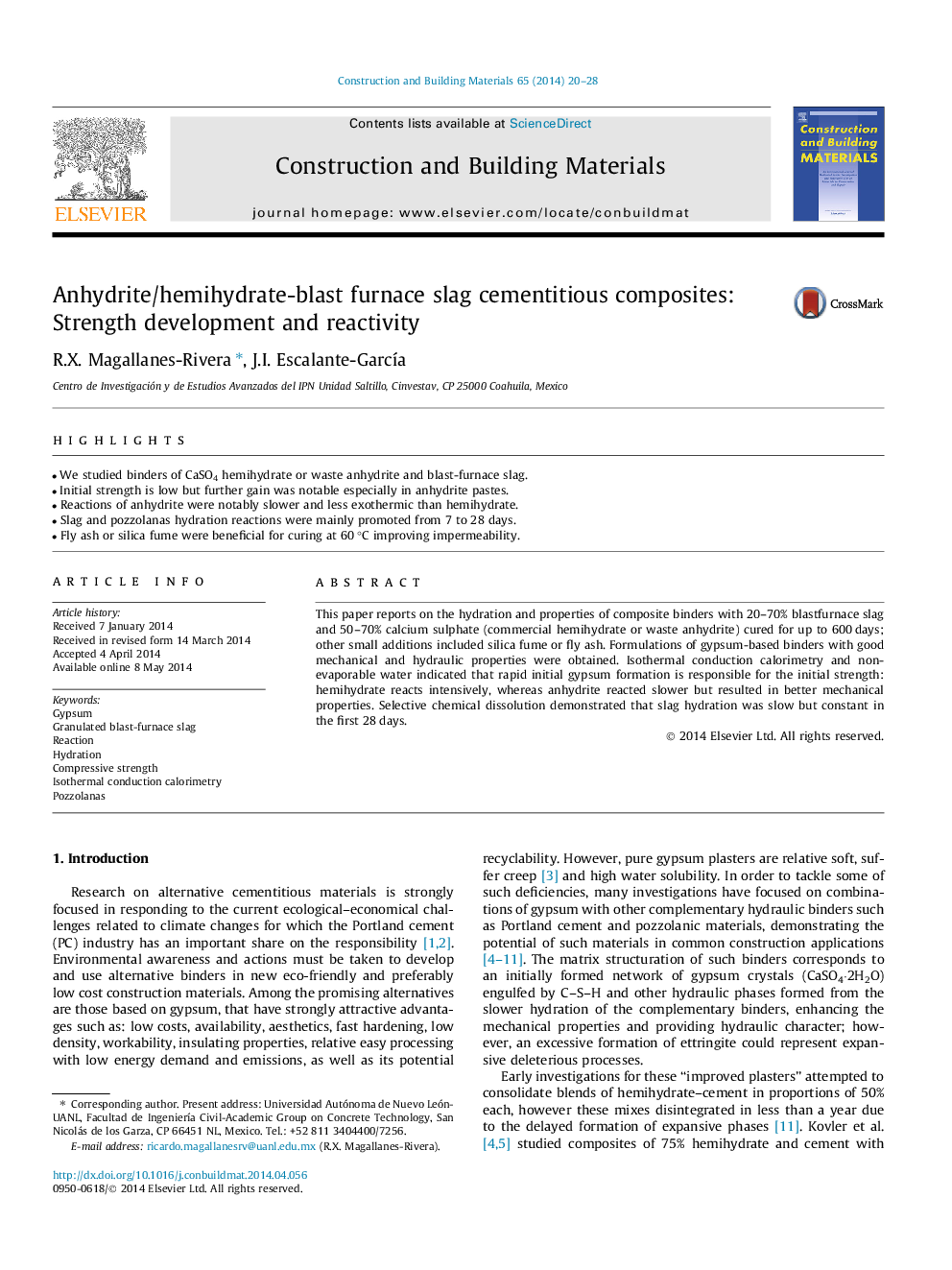| Article ID | Journal | Published Year | Pages | File Type |
|---|---|---|---|---|
| 257472 | Construction and Building Materials | 2014 | 9 Pages |
•We studied binders of CaSO4 hemihydrate or waste anhydrite and blast-furnace slag.•Initial strength is low but further gain was notable especially in anhydrite pastes.•Reactions of anhydrite were notably slower and less exothermic than hemihydrate.•Slag and pozzolanas hydration reactions were mainly promoted from 7 to 28 days.•Fly ash or silica fume were beneficial for curing at 60 °C improving impermeability.
This paper reports on the hydration and properties of composite binders with 20–70% blastfurnace slag and 50–70% calcium sulphate (commercial hemihydrate or waste anhydrite) cured for up to 600 days; other small additions included silica fume or fly ash. Formulations of gypsum-based binders with good mechanical and hydraulic properties were obtained. Isothermal conduction calorimetry and non-evaporable water indicated that rapid initial gypsum formation is responsible for the initial strength: hemihydrate reacts intensively, whereas anhydrite reacted slower but resulted in better mechanical properties. Selective chemical dissolution demonstrated that slag hydration was slow but constant in the first 28 days.
